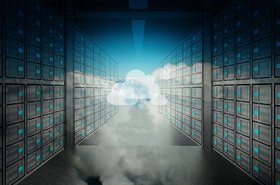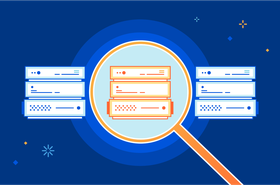AI is Redefining Roles and Elevating Engineers Up the Stack
The emergence of generative AI is revolutionizing the cloud landscape. This is fostering specialization in high-tech domains that demand significant capital investments and specialized hardware.
This transformative trend is marked by the architectural decoupling of various components - separating cloud software functions to enhance interchangeability and adaptability.
This is not just altering the day-to-day jobs of cloud engineers, but also elevating their status within the software development stack. AI's automation of routine tasks, traditionally handled by cloud engineers, liberates their time to focus on more intricate and intellectually stimulating functions higher up the stack.
Beyond routine maintenance, engineers can now spend more time focusing on the complexities of designing innovative solutions, optimizing performance, and tackling particularly challenging issues.
The synergy between AI and cloud engineering is propelling professionals into a new era of creativity and problem-solving within the evolving cloud landscape.
Egress costs will become the focus of increasing scrutiny from customers and industry watchers
In 2023, cloud lock-in became a big topic, so much so that the Competitions and Markets Authority in the UK recently launched an investigation into the cloud infrastructure industry exploring this very topic.
We can expect egress costs to become even more of a hot topic in 2024: with more businesses than ever reliant on fast speeds and low latencies to perform well, high egress costs are increasingly forming a block on innovation.
Today businesses have many different cloud workloads, and each one has slightly different requirements. Those requirements may be met better by adopting a multi-cloud, multi-provider approach, and high egress costs prevent businesses from being able to implement this strategy effectively.
The focus should be on reviewing and adjusting standard practices from cloud providers so that the industry as a whole can respond to changing customer demand, and ultimately provide a better service.
Cloud providers must keep sustainability on the agenda amid economic uncertainty
Amid economic uncertainty, businesses may be tempted to prioritize cost efficiency over sustainability. However, it's crucial to recognize that even in the short term, neglecting sustainability can have long-term consequences.
According to research published by Cornell University, “by 2025, they [data centers] are projected to consume 20 percent of global electricity and emit up to 5.5 percent of the world's carbon emissions”. As legislators inevitably act to address these concerns, we could see regulations, tax, tariff, non-tariff, or subsidies used as levers to drive carbon reductions.
Striking a balance between technological advancements, economic realities, and environmental responsibility poses a crucial challenge for cloud providers.
In navigating this delicate equilibrium, the industry must not only innovate for efficiency but also champion sustainable solutions that resonate with the evolving priorities of businesses and the global community.
Whether through the use of renewable energy, carbon offset initiatives, or other environmentally conscious practices, the commitment to building a sustainable cloud infrastructure will play a pivotal role in shaping the industry's future and fostering responsible technological growth.
Cloud is moving closer to the Edge
The migration of resources closer to the Edge is a pivotal development in the evolution of cloud computing and it comes from increasing customer demand for faster access in a greater number of locations to their applications or platforms. Even millisecond delays can result in a drop off in traffic; moving to the Edge puts workloads closer to their users.
The future of cloud architecture necessitates precision in resource placement to meet the escalating demand for efficient and responsive services.
To navigate this evolving terrain, cloud providers will need to actively facilitate dynamic resource management, emphasizing flexibility and responsiveness in our increasingly distributed computing environment.
Moving more cloud computing to the Edge also means efficient data management will come into focus.
The emphasis will increasingly be on processing and managing data as close to its source as possible, mitigating the need for extensive information transmission to other points.
This approach not only enhances efficiency but also addresses regulatory and compliance challenges associated with data transfer, offering a more secure and streamlined computing environment.





